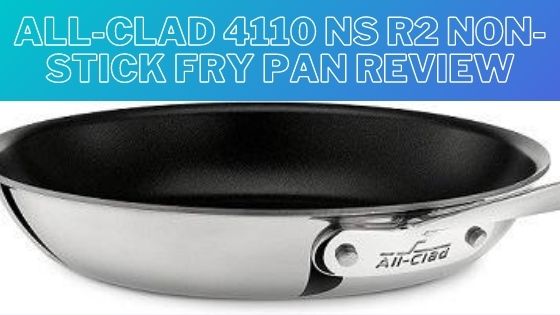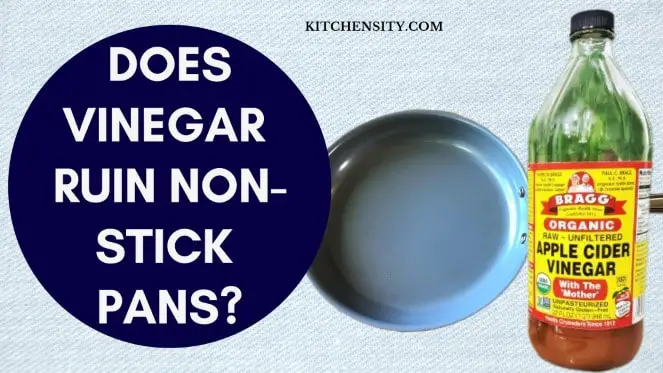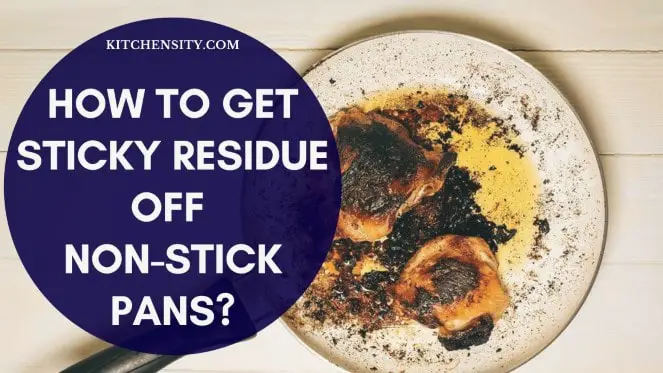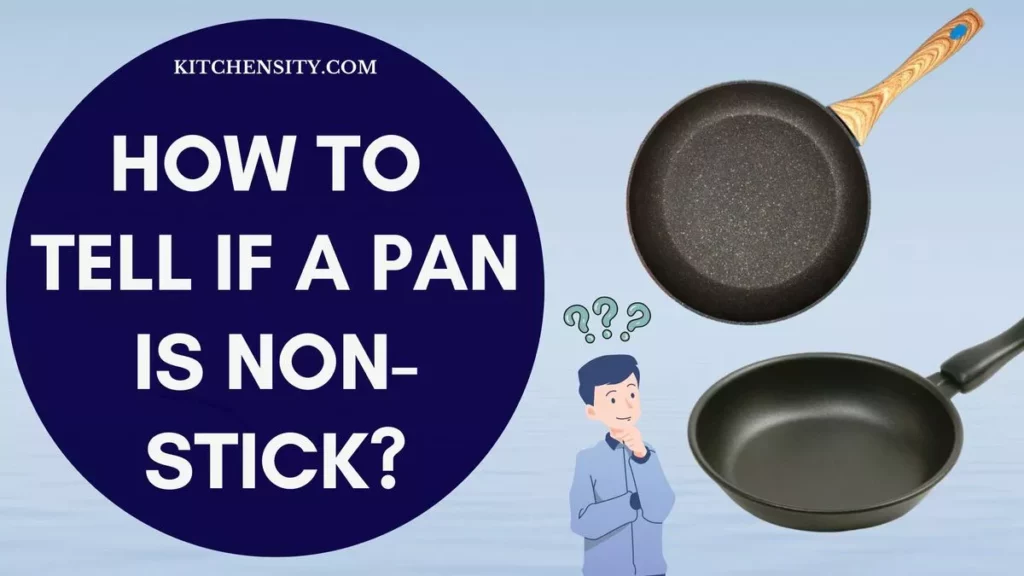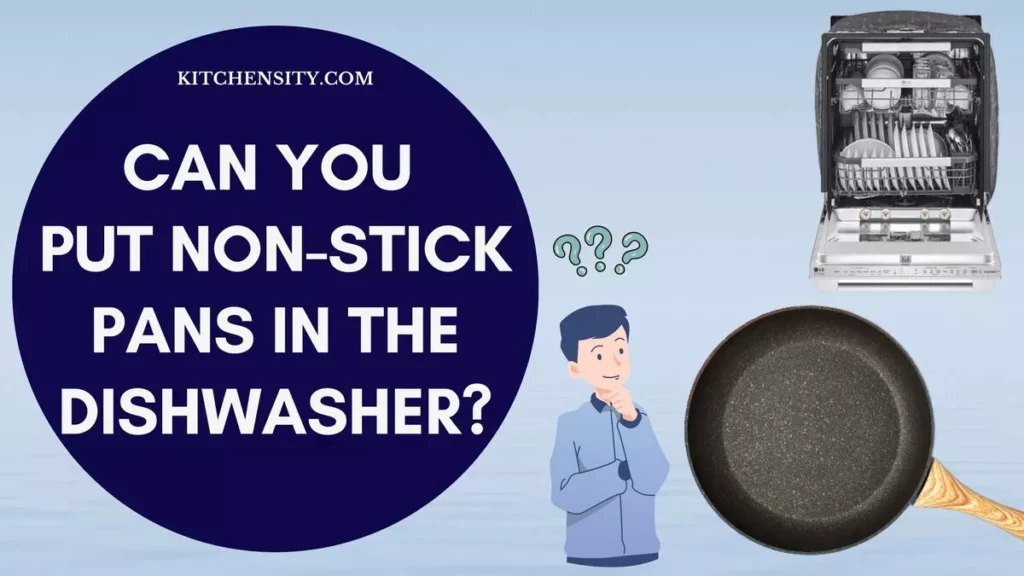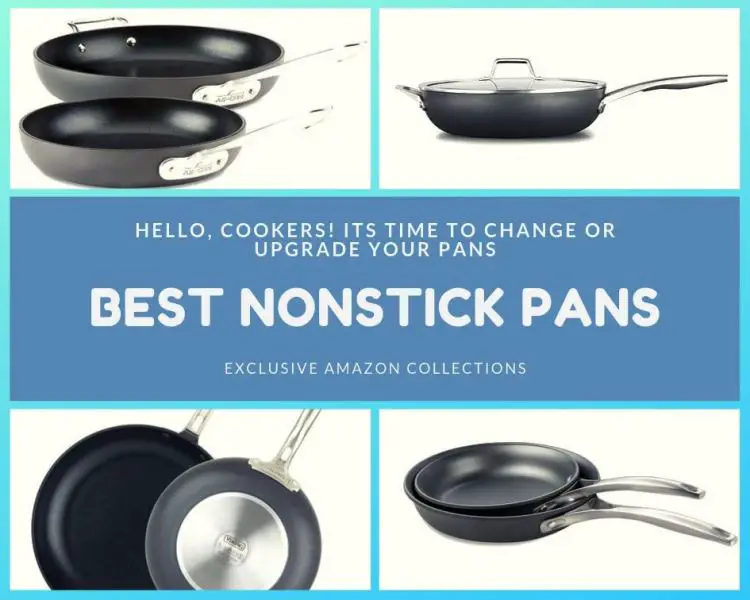Non-stick pans have become essential tools in modern kitchens, offering convenience and ease when cooking a variety of dishes. However, understanding how to make the most of these pans and which recipes work best with them is key to achieving optimal results.
In this article, we will explore the versatility of non-stick pans and provide insights into the types of recipes that are well-suited for this cookware. Whether you’re a beginner or a seasoned chef, mastering the art of cooking with non-stick pans can elevate your culinary creations.
Table of Contents
- 1 What Recipes Work Best With Non-Stick Pans?
- 2 What Is A Non-Stick Pan Best Used For?
- 3 What Should You Cook With Non-Stick Pans?
- 4 What Not To Cook In Nonstick Pans?
- 5 Can You Use Butter On Non-Stick Pans?
- 6 Tips For Cooking With Non-Stick Pans
- 7 What Recipes Work Best With Non-Stick Pans Vegetarian?
- 8 What Recipes Work Best With Non-Stick Pans Healthy?
- 9 What Recipes Work Best With Non-Stick Pans For Dinner?
- 10 Final Thoughts: What Recipes Work Best With Non-Stick Pans?
- 11 Frequently Asked Questions (FAQs)
What Recipes Work Best With Non-Stick Pans?
Non-stick pans are ideal for a variety of recipes due to their non-stick surface, which requires less oil and makes cleanup easier. Some popular recipes include vegetable stir-fry, pan-seared chicken breast, shrimp scampi, eggplant Parmesan, banana pancakes, teriyaki tofu stir-fry, mushroom risotto, vegetarian quesadillas, spinach and feta omelet, and lemon garlic tilapia.
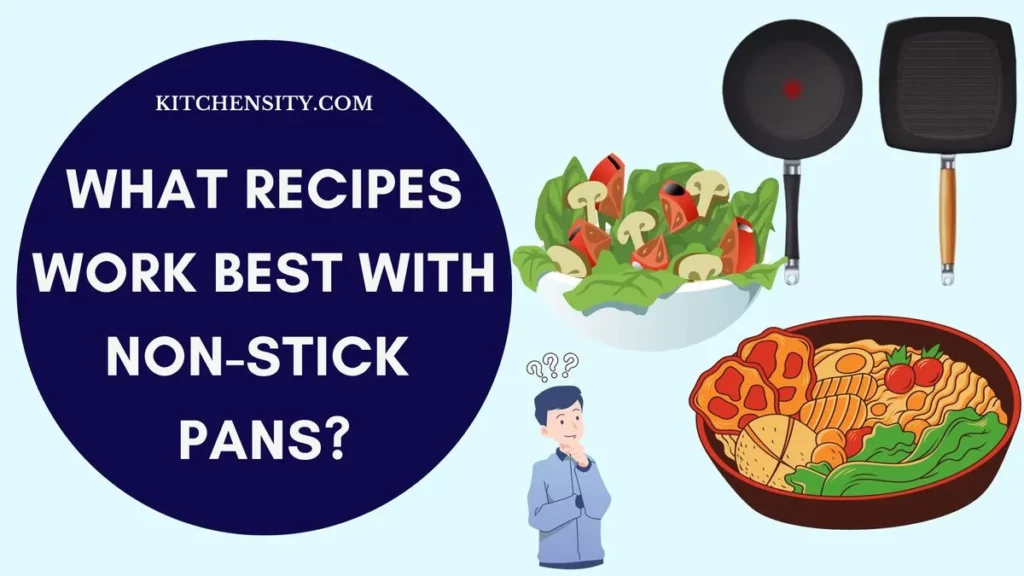
Here are 10 recipes that work well with non-stick pans, along with a brief description of each:
- Vegetable Stir-Fry: A colorful mix of bell peppers, broccoli, carrots, and snap peas, stir-fried with garlic and ginger for a quick and healthy meal. The non-stick surface allows for even cooking and easy cleanup.
- Pan-Seared Chicken Breast: Chicken breasts seasoned with herbs and spices, then seared in a non-stick pan until golden brown and cooked through. The non-stick surface helps prevent sticking and ensures the chicken stays moist.
- Shrimp Scampi: Succulent shrimp cooked in a garlic and butter sauce, served over pasta or rice. Non-stick pans are perfect for this dish, as they allow for even cooking of the shrimp without sticking.
- Eggplant Parmesan: Slices of eggplant coated in breadcrumbs and Parmesan cheese, then fried in a non-stick pan until crispy and golden brown. The non-stick surface ensures that the eggplant cooks evenly and doesn’t stick to the pan.
- Banana Pancakes: Fluffy pancakes made with mashed bananas and a hint of cinnamon, cooked in a non-stick pan until golden brown on both sides. The non-stick surface helps prevent the pancakes from sticking and makes flipping them a breeze.
- Teriyaki Tofu Stir-Fry: Cubes of tofu marinated in teriyaki sauce, stir-fried with vegetables like broccoli, bell peppers, and onions. The non-stick pan ensures that the tofu browns evenly and doesn’t stick to the pan.
- Mushroom Risotto: Creamy risotto made with Arborio rice, mushrooms, and Parmesan cheese, cooked in a non-stick pan until the rice is tender and creamy. The non-stick surface makes it easier to stir the risotto without it sticking to the pan.
- Vegetarian Quesadillas: Flour tortillas filled with a mix of cheese, black beans, corn, and diced bell peppers, then toasted in a non-stick pan until the cheese is melted and the tortillas are crispy. The non-stick surface ensures that the quesadillas don’t stick and are easy to flip.
- Spinach and Feta Omelette: A fluffy omelet filled with sautéed spinach and crumbled feta cheese, cooked in a non-stick pan until the eggs are set. The non-stick surface makes it easy to fold the omelet without it sticking.
- Lemon Garlic Tilapia: Tilapia fillets seasoned with lemon juice, garlic, and herbs, then pan-seared in a non-stick pan until flaky and golden brown. The non-stick surface ensures that the fish cooks evenly and doesn’t stick to the pan.
Also Read – Best Non-Stick Cookware Brands
What Is A Non-Stick Pan Best Used For?
A non-stick pan is best used for cooking foods that are prone to sticking, such as eggs, pancakes, and delicate fish fillets. Its slick surface prevents these foods from adhering to the pan, making it easier to flip and remove them without breakage or sticking.
Non-stick pans are also ideal for low-fat cooking, as they require minimal oil or butter, making them suitable for those seeking healthier cooking options. However, it’s important to note that non-stick pans are not designed for high-heat cooking or use with metal utensils, as this can damage the non-stick coating.
What Should You Cook With Non-Stick Pans?
Non-stick pans are best used for cooking foods that are prone to sticking, as the non-stick coating prevents these foods from adhering to the pan’s surface. One of the most common examples is eggs, which can easily stick to traditional pans but slide off effortlessly from non-stick surfaces. This makes non-stick pans ideal for preparing breakfast items like omelets, fried eggs, or scrambled eggs.
Similarly, delicate foods such as fish fillets benefit from non-stick surfaces. The smooth, non-porous coating allows for easy flipping and removal without the risk of the fish sticking or breaking apart. Pancakes and crepes are also perfect candidates for non-stick pans, as their thin consistency can make them prone to tearing or sticking in regular pans.
Non-stick pans are also great for cooking vegetables that are known for sticking, such as asparagus or zucchini. The non-stick surface ensures that these vegetables retain their shape and texture without sticking to the pan.
Another advantage of non-stick pans is their ability to cook with minimal oil or butter. This makes them suitable for recipes where you want to reduce the fat content without compromising on flavor or texture. For example, you can use non-stick pans to sauté vegetables with just a small amount of oil or to cook lean cuts of meat without adding excess fat.
Also Read – How To Care For Non-Stick Pans When Used Outdoors?
What Not To Cook In Nonstick Pans?
Certain foods and cooking techniques are not recommended for non-stick pans due to the potential for damage to the pan or the non-stick coating:
- Deep-Frying: Non-stick pans are unsuitable for deep-frying, especially with large quantities of oil or at high temperatures. The non-stick coating can degrade when exposed to excessive heat or prolonged contact with hot oil.
- Grilling or Broiling: Non-stick pans are not designed for grilling or broiling in the oven. These high-heat cooking methods can damage the non-stick coating and are better suited for other types of cookware, such as cast iron or stainless steel.
- Cooking at Extremely High Temperatures: Avoid using non-stick pans for cooking techniques that require extremely high temperatures, such as searing or blackening. The non-stick coating may not withstand such high heat and could deteriorate over time.
- Cooking Foods That Require Browning: While non-stick pans prevent food from sticking, they are not ideal for achieving a deep brown sear on meats or vegetables. For recipes that require browning, consider using a different type of pan that can withstand higher temperatures.
- Cooking Highly Acidic Foods: Prolonged cooking of highly acidic foods, such as tomato-based sauces, can potentially degrade the non-stick coating over time. While non-stick pans can handle mild acidity, it’s best to avoid prolonged exposure to highly acidic foods.
Also Read – Can You Use Non-Stick Cookware On High Heat?
Can You Use Butter On Non-Stick Pans?
Yes, you can use butter on non-stick pans. However, it’s important to use it in moderation to prevent the butter from burning. Non-stick pans require less butter or oil than traditional pans due to their non-stick coating, which reduces the likelihood of food sticking. Using a small amount of butter can enhance flavor and help achieve a golden brown finish without compromising the non-stick properties of the pan.
Using too much butter in a non-stick pan can lead to several issues.
- Firstly, the excess butter can cause the pan to become too hot, which may result in the butter burning and imparting a bitter taste to your food.
- Additionally, an excessive amount of butter can negate the non-stick properties of the pan, as the excess fat can pool and create a sticky surface, making it more likely for food to stick. This can also make the pan more difficult to clean.
Therefore, it’s best to use butter sparingly in non-stick pans to avoid these issues and maintain their non-stick properties.
Also Read – How To Use A Non-Stick Pan For The First Time?
Tips For Cooking With Non-Stick Pans
When cooking with non-stick pans, consider the following tips to maximize their effectiveness:
- Use Low to Medium Heat: Non-stick pans are best used at low to medium heat settings. Avoid using high heat, as it can damage the non-stick coating and reduce its longevity.
- Use Less Oil or Butter: Non-stick pans require less oil or butter compared to traditional pans. Using excessive amounts can lead to a buildup of residue and may affect the pan’s non-stick properties.
- Avoid Metal Utensils: Use wooden or silicone utensils instead of metal ones to avoid scratching the non-stick coating. Scratches can reduce the effectiveness of the non-stick surface and make it more prone to sticking.
- Prevent Thermal Shock: Avoid exposing non-stick pans to rapid temperature changes, such as placing a hot pan under cold water. Thermal shock can damage the coating and affect its non-stick properties.
- Clean Gently: When cleaning non-stick pans, use gentle cleaning tools such as soft sponges or cloths. Avoid abrasive cleaners or scrubbers that can scratch the coating.
Also Read – Are Non-Stick Coatings Safe For Cooking?
What Recipes Work Best With Non-Stick Pans Vegetarian?
Non-stick pans are versatile and well-suited for cooking a variety of vegetarian dishes. Here are some vegetarian recipes that work particularly well with non-stick pans:
- Vegetable Stir-Fry: A colorful mix of vegetables like bell peppers, broccoli, carrots, and snap peas stir-fried with garlic and ginger makes for a quick and healthy meal.
- Tofu Scramble: Soft tofu crumbled and cooked with vegetables like spinach, tomatoes, and onions, seasoned with turmeric and cumin for a flavorful, protein-packed breakfast.
- Veggie Quesadillas: Flour tortillas filled with a mix of cheese, black beans, corn, and diced bell peppers, lightly toasted in a non-stick pan until golden and crispy.
- Pancakes: Fluffy pancakes made with a simple batter of flour, milk, and eggs, served with fresh fruits or maple syrup for a delightful breakfast option.
- Vegetable Frittata: A frittata made with a variety of vegetables such as bell peppers, zucchini, onions, and tomatoes, cooked until set and golden brown.
- Stir-Fried Noodles: Quick and easy stir-fried noodles with vegetables like bell peppers, carrots, and broccoli, seasoned with soy sauce and sesame oil.
- Veggie Burgers: Homemade veggie burgers made with a mixture of mashed beans, grains, and finely chopped vegetables, pan-fried until crispy on the outside.
- Stuffed Bell Peppers: Bell peppers stuffed with a savory mixture of rice, beans, corn, and spices, then baked or pan-seared until tender.
- Grilled Veggie Skewers: Skewers loaded with colorful vegetables like cherry tomatoes, mushrooms, bell peppers, and onions, grilled until charred and tender.
These vegetarian recipes are well-suited for non-stick pans, ensuring easy cooking and cleanup while preserving the natural flavors of the ingredients.
Also Read – Types Of Non-Stick Coatings
What Recipes Work Best With Non-Stick Pans Healthy?
Several healthy recipes work well with non-stick pans, making them ideal for health-conscious cooks. Here are some examples:
- Quinoa and Vegetable Stir-Fry: A nutritious stir-fry featuring protein-packed quinoa and a mix of colorful vegetables like bell peppers, broccoli, and snap peas, flavored with a light soy or teriyaki sauce.
- Grilled Veggie Tacos: Grilled vegetable tacos filled with a variety of vegetables like zucchini, bell peppers, onions, and mushrooms, seasoned with Mexican spices and served in whole-grain tortillas.
- Sweet Potato and Black Bean Hash: A hearty and nutritious hash made with diced sweet potatoes, black beans, bell peppers, and onions, seasoned with spices like cumin and chili powder.
- Mediterranean Veggie Skillet: A Mediterranean-inspired skillet dish featuring a mix of vegetables such as tomatoes, spinach, artichokes, and olives, cooked with olive oil and herbs.
- Cauliflower Fried Rice: A healthier twist on classic fried rice, using finely chopped cauliflower instead of rice, mixed with vegetables, eggs, and soy sauce for a low-carb alternative.
These recipes are not only delicious but also offer a good balance of nutrients, making them suitable for those looking to maintain a healthy lifestyle. When prepared in non-stick pans, these dishes can be cooked with minimal oil and are less likely to stick, allowing for healthier cooking without sacrificing flavor.
Also Read – How To Extend The Lifespan Of Non-Stick Pans?
What Recipes Work Best With Non-Stick Pans For Dinner?
Non-stick pans are versatile and can be used to prepare a wide variety of dinner recipes. Here are some dinner ideas that work particularly well with non-stick pans:
- Pan-Seared Salmon: A simple and elegant dinner option, where salmon fillets are seasoned and seared in a non-stick pan until crispy on the outside and tender on the inside.
- Vegetarian Stir-Fry: A colorful and flavorful stir-fry featuring an assortment of vegetables like bell peppers, broccoli, carrots, and snap peas, cooked with tofu or tempeh for added protein.
- Chicken Stir-Fry: A quick and easy dish that combines sliced chicken breast with vegetables and a savory sauce, cooked in a non-stick pan for a delicious and healthy meal.
- Shrimp Scampi: Succulent shrimp cooked in a garlic and butter sauce, served over pasta or rice for a satisfying dinner option that comes together quickly in a non-stick pan.
- Vegetable Pasta Primavera: A light and fresh pasta dish featuring a medley of seasonal vegetables, such as cherry tomatoes, asparagus, and spinach, tossed with pasta and a light olive oil-based sauce.
These recipes are just a few examples of the many dinner options that can be prepared using non-stick pans. Non-stick pans are ideal for cooking dinner because they require less oil and make cleanup easier, allowing you to focus on creating delicious meals for your family and friends.
Also Read – Things To Look For When Buying Non-Stick Cookware
Final Thoughts: What Recipes Work Best With Non-Stick Pans?
In conclusion, non-stick pans are a valuable addition to any kitchen, offering versatility and ease of use. Their non-stick surface simplifies cooking and cleanup, making them suitable for a wide range of recipes, from delicate omelets to hearty stir-fries.
By choosing the right recipes and using proper cooking techniques, such as using low to medium heat and avoiding metal utensils, you can maximize the benefits of non-stick pans and enjoy a seamless cooking experience.
With their ability to cook a variety of dishes with minimal oil and effort, non-stick pans are a valuable tool for both novice and experienced cooks alike.
Also Read – Can You Deep Fry In A Non-Stick Pan?
Frequently Asked Questions (FAQs)
Can You Use Non-Stick Pans For High-Heat Cooking?
Yes, you can use non-stick pans for high-heat cooking, but it’s best to avoid extremely high temperatures to prevent damage to the non-stick coating.
How Do You Clean Non-Stick Pans?
Clean non-stick pans with mild dish soap and warm water, using a soft sponge or cloth. Avoid abrasive cleaners or scrubbers that can damage the non-stick surface.
Are Non-Stick Pans Safe For Cooking?
When used properly and not overheated, non-stick pans are safe for cooking. However, it’s important to follow manufacturer guidelines and avoid using metal utensils that can scratch the coating.
Can Non-Stick Pans Be Used In The Oven?
Some non-stick pans are oven-safe, but it’s essential to check the manufacturer’s instructions for specific temperature limits and guidelines for oven use.
How Long Do Non-Stick Pans Last?
The lifespan of non-stick pans varies depending on usage and maintenance. With proper care, they can last several years, but the non-stick coating may eventually wear off over time.
Katrina Smith is a seasoned expert with over 25 years of experience in all things related to cooking and the kitchen. As an avid cook and kitchen enthusiast, she is passionate about sharing her knowledge and expertise on cookware, kitchen appliances, kitchen tips, and kitchen staples.
Through her articles and reviews, Katrina aims to inspire and help others improve their cooking skills, experiment with different ingredients, and invest in quality cookware and appliances.

